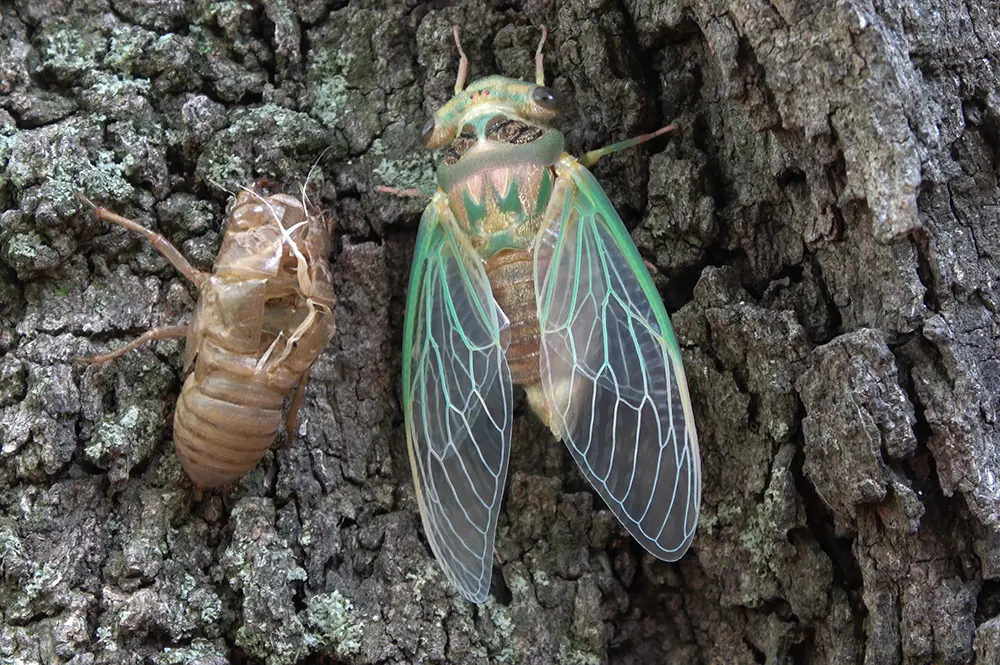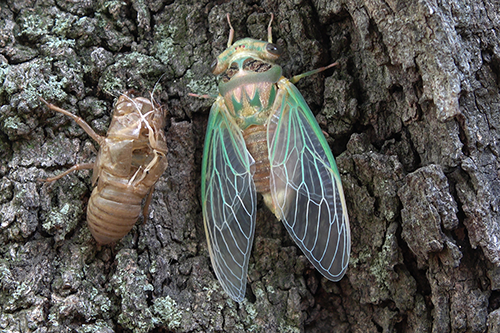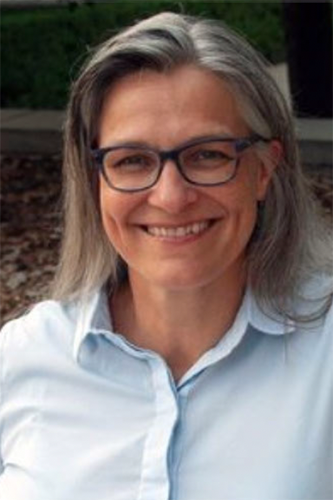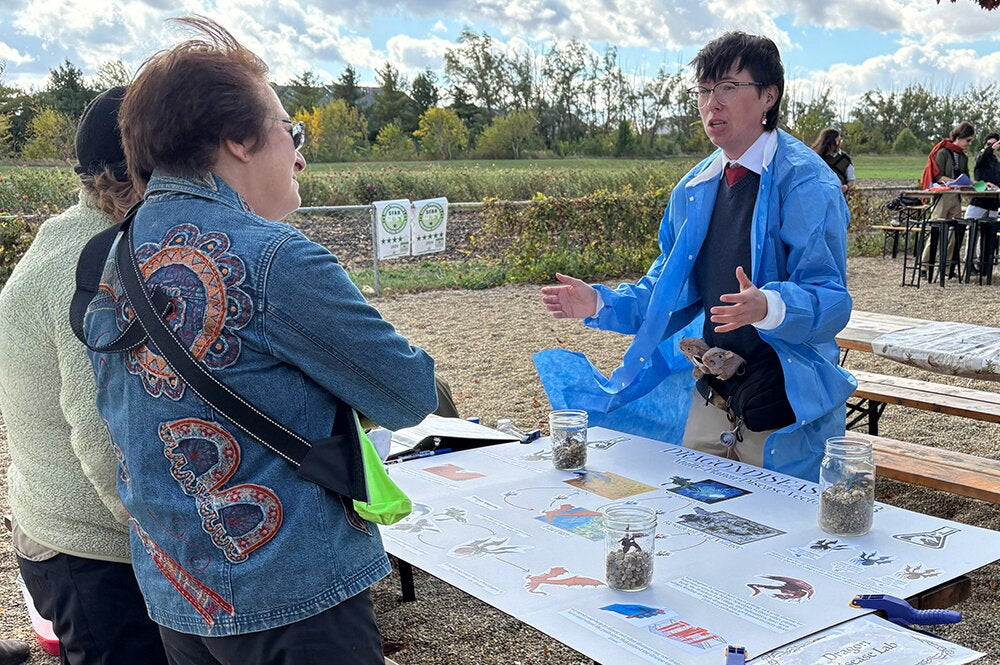

To some, an invasion of insects that come crawling out of the earth is just another disturbing chapter of the year 2020, but entomology professor Marianne Alleyne knows that there’s a lot to learn from cicadas. She even looks forward to seeing—and hearing—the noisy, flying creatures.
“The sound of cicadas in the summertime, together with the sight of fireflies, is one of my favorite things about living in Central Illinois,” Alleyne said.

She doesn’t just appreciate cicadas—she studies them. Cicadas have properties of interest to scientists across many fields of study, and Alleyne recently co-authored a research paper on how the structural features and the chemical compounds present on cicada wings are crucial to their functionality. With the year 2020 being a big year for cicadas (a particular brood that appears once every 17 years emerged in certain parts of the country) her work was recently featured in Smithsonian Magazine and Scientific American.
Aside from her appreciation for the odd, cyclical bugs, Alleyne’s research interest in cicadas is this: By understanding certain features of cicadas, researchers are gaining a better understanding of how to address certain problems faced by people.
“The project is supposed to look at the wings of many different insect species, but cicada wings have been relatively easy to work with,” Alleyne said. “So we can design the methodology with cicada wings and then broaden it to other taxa–and the results from working with cicada wings have been very interesting.”
The research paper, which Alleyne wrote with chemists Donald Cropek (Construction Engineering Research Laboratory – U.S. Army Corps of Engineers) and Jessica Román-Kustas (Sandia National Laboratories), as well as U of I professor Nenad Miljkovic in the Department of Mechanical Science and Engineering, studied the Neotibicen pruinosus species, an annual cicada, or a subset of cicadas that emerge from underground and change into adults once a year.

The study also focuses on the Magicicada cassinii species of periodical cicadas, which only emerges every 17 years. Not only will their findings help inform scientists about the biodiversity present in Illinois, but they will also help scientists design novel engineered material with similar characteristics as the insect’s wings.
The structure of cicada wings have proven to be very insightful. Cicadas live for years underground as larvae before spending their last few weeks of life above ground as adults with wings equipped with nanopillars that repel water, kill bacteria, and thus keep the wings clean. An earlier study co-authored by the principal investigators Alleyne, Cropek, and Miljkovic focused on the water-repelling ability of cicada wings and confirmed that the structural features are responsible for this property. These features vary among different Illinois species.
The research by Alleyne and her colleagues published more recently is unique. Unlike previous research, it focuses on not only the structure of cicada wings but chemical compounds that are present on the wings. The research found that the chemical compounds secreted by cicadas are vital to building and maintaining its nanopillars. Harnessing the properties of those nanopillars could help scientists address a multitude of real-world problems.
One problem that could be addressed, Alleyne said, is the degradation of various equipment due to biofouling, or the buildup of bacteria and fungi. Reducing biofouling could positively impact many different areas in our lives, including preventing harmful microbes from building up in air tubes that hospital patients rely upon for breathing.
“By looking at nature and seeing all these different ways organisms deal with biofouling, we can find the perfect solution that should work for our setting,” Alleyne said.
Alleyne’s research on cicadas is multidisciplinary. Miljkovic said that Alleyne’s expertise was essential as they sought to better understand the properties of cicadas and what made them efficient.
“As mechanical engineers, we struggled to identify, catalog, catch, and handle cicada species,” Miljkovic said. “The work with Dr. Alleyne’s lab truly enabled the study by allowing us to understand both what species we were analyzing, helping us find those species in the wild and cataloging them, and also identifying key species features when doing analysis with microscopy and chemistry.”
Alleyne says her research on cicadas is also showing scientists that by observing certain aspects of nature, they can learn how to accomplish solutions for many of the problems we face without using harmful chemistry or fabrication methods.
“It will not necessarily be easy to mimic nature,” she said, “but we have the proof right in front of us that it can be done.”


